I can eat Katte Pongali or Ven Pongal anytime, any place. I don’t need any accompaniments either; just this plain Khara Pongal with some (ok, ok, lots of) ghee is a favourite breakfast of mine. 🙂 Apart from being a popular breakfast, this dish often served as naivedyam during festivals such as Navratri.
There is something about a well-made Ven Pongal that can make it just the perfect start to the day. Called Katte Pongali in Andhra Pradesh and sometimes called Khara Pongal to distinguish it from the Chakkara Pongal or Sweet Pongal, this dish is comfort food in South India.
Made of moong dal and rice, it is tempered with cumin, pepper, and ginger fried in loads of ghee. It is the tempering that gives Ven Pongal its distinctive flavour and aroma. Rice and moong dal cooked to a mashable consistency and the loads of ghee in the tempering give this dish its distinctive soft and gooey texture.
You get some of the best Ven Pongal (outside of a temple) at the Railway Food Stall on Warangal station (the one opposite the Second AC compartment for trains to or from Mumbai). He liberally adds green chillies to it and what I can only guess is oil. 😀 But somehow the taste is quite unbeatable.
What Makes for the Perfect Ven Pongal or Katte Pongali?
- Make Ven Pongal with recently harvested rice. This is because this rice cooks well and becomes very soft that gives this dish its distinctive texture. If you are using older rice (more than 6 months from harvest), cook the dal-rice mix for longer.
- Use rice and moong dal in a 1:1 ratio to ensure that the flavour of dal comes through.
- Add 3 times the water to the dal-rice mix. So if you use 1/2 cup rice and 1/2 cup moong dal (total of 1 cup), use 3 cups of water. Do not use too much water because then the Pongal would be watery.
- Be liberal when adding ghee for the tempering. Katte Pongali tends to dry out quickly and the ghee helps keep it soft and gooey. Of course, the flavour of the ghee adds to the pleasure of eating this dish while the fat in the ghee helps digest the protein and carbohydrate combination of dal and rice.
- Lightly crush the peppercorns used in the tempering. This adds to the depth of flavour of the Pongal. In addition, the peppercorns do not “explode” (pop rather violently) as they fry. 🙂
- Do not skimp on the pepper, ginger and asafoetida as they are essential to

How to Savour Ven Pongal?
- A few years ago, I discovered the pleasure of eating Ven Pongal with Avial, thanks to Hotel Ram Ashraya in Matunga, Mumbai. In fact, we look forward to a breakfast here on Sundays, the only day that this combination is served.
- Of course, Coconut Chutney is a favoured accompaniment.
- Kathirikai Gothsu is a simply delightful side dish as well.
More Recipes for Sankranti
- Bhogichi Bhaji | A Makara Sankranti Recipe from Maharashtra
- Tilachya Vadya for Makar Sankranti
- Sakkarai Pongal | Chakkara Pongal | Sweet Pongal
- Kalkandu Pongal | Kalkandu Sadam | Patika Bellam Pongali

How to Make Katte Pongali | Ven Pongal | Khara Pongal
- Optional
- In a heavy-bottomed wok, over low flame, dry roast 1/2 cup moong dal for 2 to 3 minutes. The moong dal should just become aromatic and not change colour.
- Using the back of a heavy ladle or a mortar and pestle, lightly crush the pepper corns. Appky just enough pressure to break a few peppercorns.
- Cooking the Moong Dal-Rice Mix
- Pressure cook 1/2 cup rice and 1/2 cup moong dal with 3 cups of water for 4 whistles.

- Let the pressure cooker depressurize normally and take the rice-dal mix out of the cooker.
- Add some salt to the dal-rice mix.
- Using a heavy ladle, mix the cooked moong dal and rice well so that the dal gets mashed well.

- Pressure cook 1/2 cup rice and 1/2 cup moong dal with 3 cups of water for 4 whistles.
- Adding the Tempering
- In a small kadai or a tempering ladle, over medium heat, melt 2 tbsp ghee. Do not stint on the ghee. It is the ghee that gives Ven Pongal its lovely flavour.
- Add 1 tsp lightly crushed peppercorns and fry for a few seconds.

- Add 1 tsp cumin seeds and 2 tbsp split cashews.
- Stir-fry till they start to change colour.

- Add 1 tsp grated ginger, 2 large pinches of asafoetida and a few curry leaves.
- Stir-fry for a few seconds.

- Add the tempering to the cooked dal-rice and mix well.

- Serve hot Ven Pongal with Coconut Chutney, Avial or Kathirikai Gothsu.
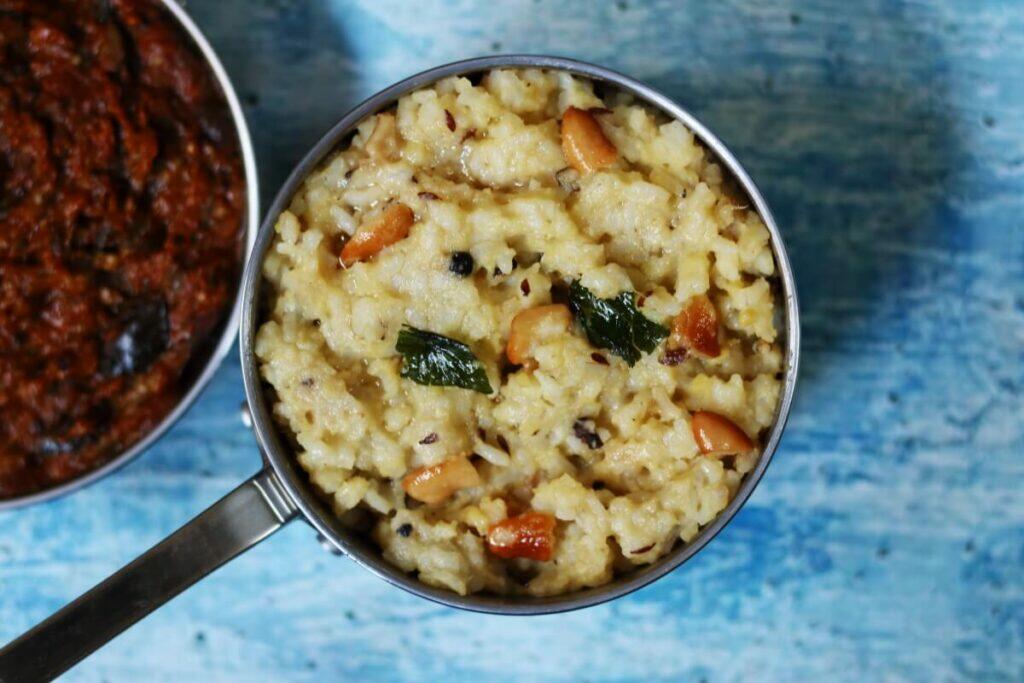
I first posted this recipe in 2009 and then updated it in 2015. I update it again today to make it more current.
Recipe for Ven Pongal | Katte Pongali | Khara Pongal
Ven Pongal | Khara Pongal | Katte Pongali
Equipment
- Vessel (1/2 litre capacity)
- Heavy Spoon or Ladle
- Small Wok or Tempering Ladle
Ingredients
- 1/2 Cup Rice
- 1/2 Cup Moong Dal
- 3 Cups Water
- Salt to Taste
- 1 tsp Pepper Corns
- 1 tsp Cumin Seeds
- 12 to 15 Cashew Nuts (Broken to pieces)
- 1 tsp Grated Ginger
- 3 tbsp Ghee
- 1/8 tsp Asafoetida
- A Few Curry Leaves
Instructions
- In a heavy-bottomed wok, over low flame, dry roast 1/2 cup moong dal for 2 to 3 minutes. The moong dal should just become aromatic and not change colour.
- Using the back of a heavy ladle or a mortar and pestle, lightly crush the pepper corns. Apply just enough pressure to break a few peppercorns.
- Pressure cook 1/2 cup rice and 1/2 cup moong dal with 3 cups of water for 4 whistles.
- Let the pressure cooker depressurize normally and take the rice-dal mix out of the cooker.
- Add some salt to the dal-rice mix.
- Using a heavy ladle, mix the cooked moong dal and rice well so that the dal gets mashed well.
- In a small kadai or a tempering ladle, over medium heat, melt 2 tbsp ghee. Do not stint on the ghee. It is the ghee that gives Ven Pongal its lovely flavour.
- Add 1 tsp lightly crushed peppercorns and fry for a few seconds.
- Add 1 tsp cumin seeds and 2 tbsp split cashews.
- Stir-fry till they start to change colour.
- Add 1 tsp grated ginger, 2 large pinches of asafoetida and a few curry leaves.
- Stir-fry for a few seconds.
- Add the tempering to the cooked dal-rice and mix well.
- Serve hot Ven Pongal with Coconut Chutney, Avial or Kathirikai Gothsu.
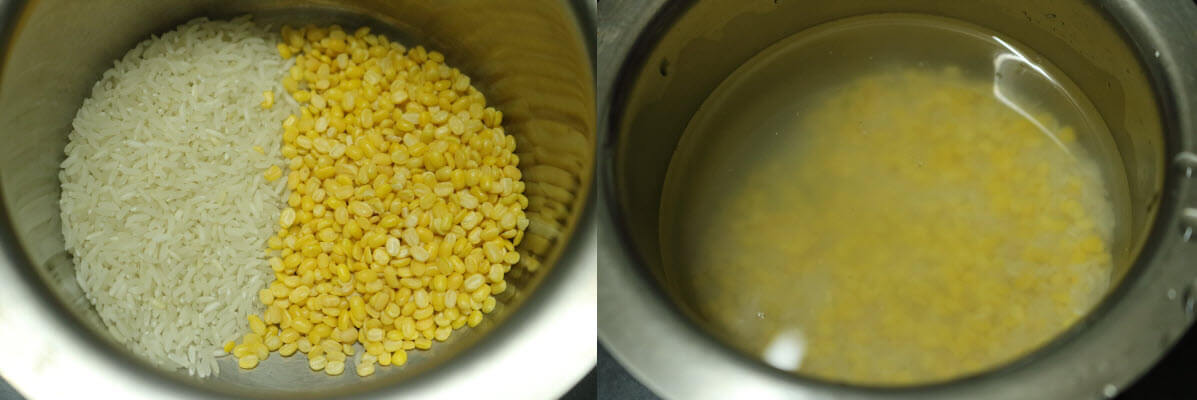
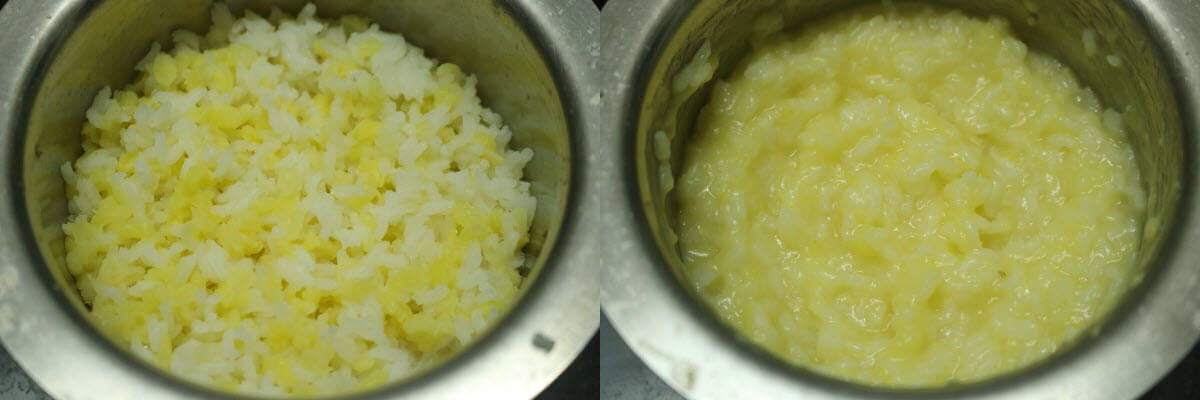
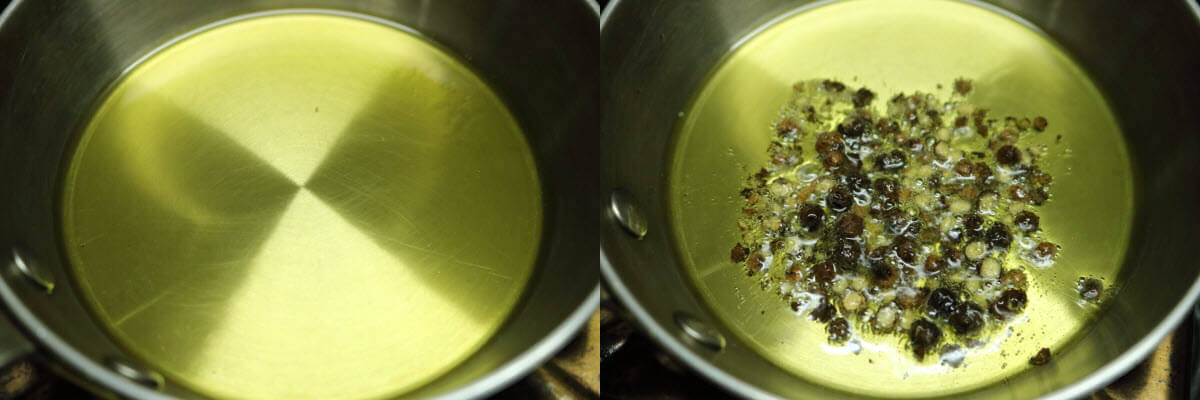
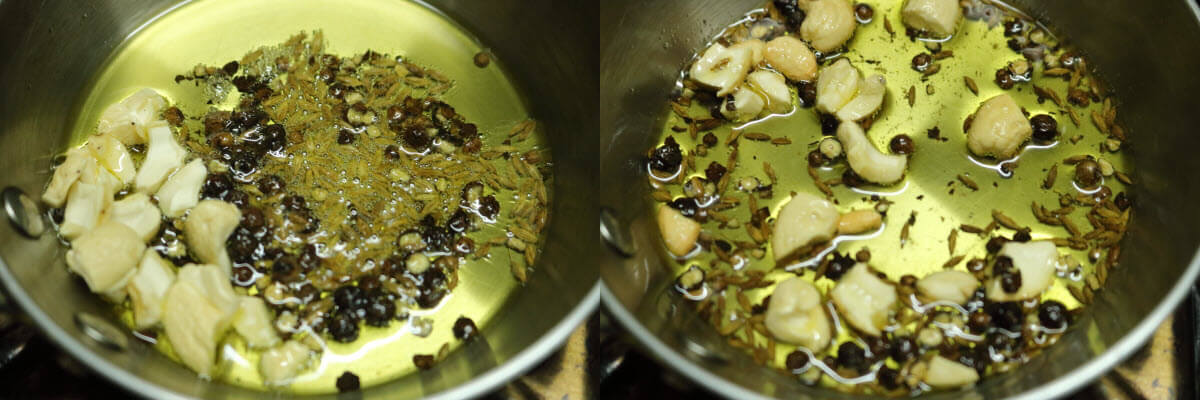


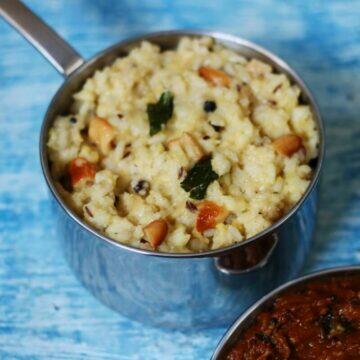

Wonderful Post
We do this day before Varalakshmi Pooja and call mangal pongal.. Can’t say no to pongal, looks yum
Reblogged this on MAXIMUSOPTIMUSDOMINUS.
Great minds think alike 🙂 I have a pongal recipe for today 🙂 I love your blog for all the Telugu names I get to hear! 🙂
😀
I love Pongal too!! In my house, my grandma served this with Onion raita..love that combination!